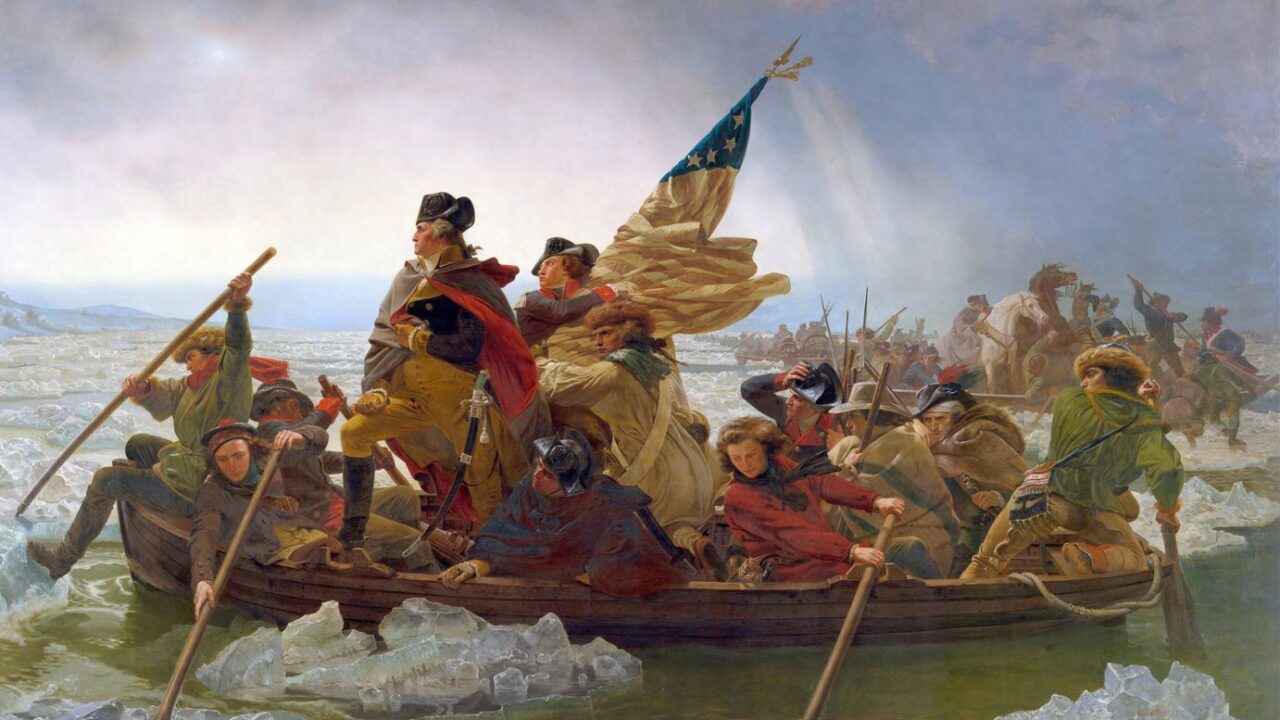The Deeper Meaning of “Washington Crossing the Delaware”
The iconic painting by Emanuel Leutze is often criticized today for being historically inaccurate and simplistically patriotic, but the truth is far more interesting.

The most famous image of the American Revolution hangs not in the Capitol but in the Metropolitan Museum of Art. Emanuel Leutze’s enormous 1851 painting “Washington Crossing the Delaware” depicts the general’s journey on Dec. 25, 1776, as he launched a surprise attack on hundreds of Hessian troops quartered in Trenton, N.J. Few American paintings are so recognizable, as countless parodies attest.
But as its fame has increased, so have criticisms of the work. Some detractors focus on Leutze’s alleged errors and inaccuracies. Washington’s troops crossed in the dead of night, not during the dawn’s early light; the boat that carried the general would have been much larger than the one in the painting and could not have contained so many soldiers. The stars-and-stripes banner held in the painting by future president James Monroe was not adopted as the nation’s flag until 1777. And the river, with its large, blue blocks of ice, looks more like the Rhine in Leutze’s native Germany than any American waterway.
Other critics are made uncomfortable by what they see as the painting’s simplistic glorification of the American past. The description of the painting on the Metropolitan Museum’s website notes that its focus on George Washington reflects a “Great Man theory of history.” The museum commissioned a modern version, featuring Native Americans rather than Continental soldiers, in order to reflect on “the biases of American history and mythmaking.”
In truth, however, while Leutze’s painting is certainly patriotic, it is not simplistically so. It is a complex reflection on both the inspirational achievements of the revolution and the ways it failed to live up to its ideals. In dramatizing the past, the work expresses aspirations for the American future.
Read the full essay at The Wall Street Journal [subscription may be required].
The iconic painting by Emanuel Leutze is often criticized today for being historically inaccurate and simplistically patriotic, but the truth is far more interesting.
The iconic painting by Emanuel Leutze is often criticized today for being historically inaccurate and simplistically patriotic, but the truth is far more interesting.

